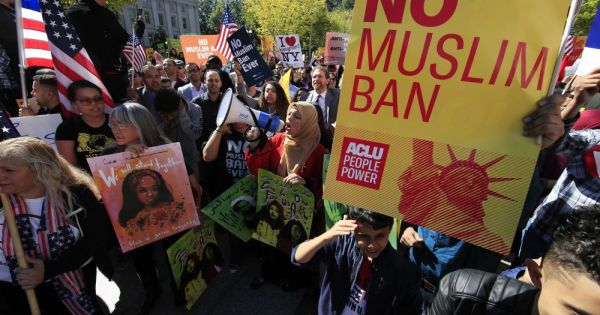Non-Muslims who live close to Muslims are less likely to be Islamophobic – Study
The most recent Islamophobia in Australia report shows Muslims continue to be the targets of hostility and violence. The September 11 terrorist attacks in 2001 propelled them to this unenviable position. The 12 Islamic months, their meaning and significance Happy Islamic New Year 1442 More recently, Islamic State has reinforced Western fears of and antipathy […]

The most recent Islamophobia in Australia report shows Muslims continue to be the targets of hostility and violence.
The September 11 terrorist attacks in 2001 propelled them to this unenviable position.
The 12 Islamic months, their meaning and significance
More recently, Islamic State has reinforced Western fears of and antipathy towards Islam and Muslims.
A new study by RMIT University in Melbourne, Australia found non-Muslim Australians living in areas with high numbers of Muslims are less Islamophobic than the general populations of Sydney and Melbourne.
This suggests living side-by-side could be an antidote to Islamophobia.
Islamophobia refers to indiscriminate negative attitudes or emotions directed at Islam or Muslims.
Australians, according to the study, typically know very little about Muslims and their faith.
As a result, they tend to lump together this vastly diverse group as backward, gender-oppressive and violent.
Just like any other large population group, Muslims come from a variety of ethno-cultural and socio-economic backgrounds.
In the 2016 Census, more than 600,000 people identified as Muslims in Australia, with about three-quarters living in Sydney and Melbourne.
They tend to be concentrated in specific suburbs, where they are also visible through ethnic businesses, schools and places of worship.
The study examined Islamophobia in the top ten Muslim suburbs of Sydney and Melbourne, in comparison with the rest of the two metropolitan areas.
It surveyed 1,020 people in the target areas and found non-Muslims living in Muslim areas were less Islamophobic than the general populations of Sydney and Melbourne, scoring 2.31 compared to 2.80.
The study also found Sydneysiders were less Islamophobic than Melbournians.
In Muslim areas of Sydney, non-Muslims’ Islamophobia score was 2.18, compared to 2.32 in comparable areas of Melbourne.
Other findings showed that younger people were less Islamophobic than older Australians.
Those aged 18 to 34 scored 2.32 on the Islamophobia scale, while those over 65 scored 2.80.
This is line with previous studies that suggest prejudice increases with age.
This is due to social attitudes, particularly those in school curricula and university courses, have significantly changed in recent decades.
Those with more formal education were also less Islamophobic.
Those with a university education scored 2.47, compared with 2.90 for those with only ten years of schooling.
Compared to many other Western countries, Australia is not the worst place to be a minority Muslim.
A 2015 survey found only about 10% of Australian respondents were highly Islamophobic.
The researchers noted that media coverage is critical when it comes to Islamophobia.
This can expose people to negative portrayals of Islam and Muslims, intolerant statements by political leaders and other opinion makers.
They concluded that when non-Muslims interact with Muslims, they are less likely to be Islamophobic.
This suggests an important way to combat Islamophobia is to have more rather than fewer Muslims among us and to learn more about their religion and way of life, they added.
